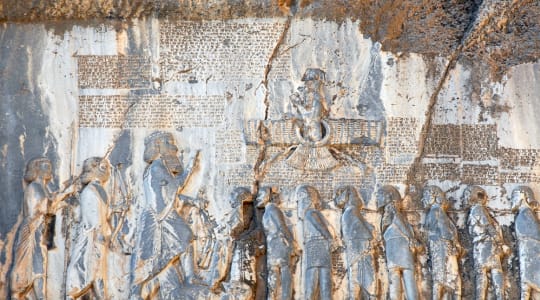
The Behistun Inscription is a multilingual inscription located on a towering cliff at Mount Behistun in present-day Iran. It was commissioned by Darius the Great, the king of the Achaemenid Empire, in 520 BCE to celebrate his victories over his enemies and assert his authority over his empire.
The inscription is written in three different scripts and languages: Old Persian, Elamite, and Babylonian. The Old Persian version is the most extensive and is written in cuneiform script. It contains 414 lines and provides valuable information about the history, religion, and administration of the Achaemenid Empire. The other two versions are shorter and written in different scripts.
The inscription also contains a depiction of Darius and his enemies, including Gaumata, who was a Magian usurper who claimed the throne of Persia after the death of Cambyses II. The inscription tells the story of how Darius defeated Gaumata and his supporters and established his rule over Persia. It also lists the countries and peoples that were subject to the Achaemenid Empire.
The Behistun Inscription was first studied and translated by Sir Henry Rawlinson, a British soldier and scholar, in the mid-19th century. His work paved the way for the decipherment of cuneiform script and significantly contributed to the study of ancient history and archaeology. The inscription has been designated as a UNESCO World Heritage site and is considered one of the most important historical and archaeological sites in the world.
Explore Near Behistun Inscription
Discover 1 attraction, 5 cities, and 1 airport within 75km. Perfect for planning day trips, finding connecting flights, or discovering new destinations to explore during your visit.
Nearby Attractions & Places to Visit
1 destination within 27.9km from your location

Nearby Cities Worth Exploring
5 destinations within 19.1km - 64.1km from your location
Airports Near Behistun Inscription
1 destination within 26.0km from your location
Cross-Border Adventures Near Behistun Inscription
Discover cross-border adventures near Behistun Inscription. Explore neighboring countries with similar attractions and extend your travel experience across borders.






